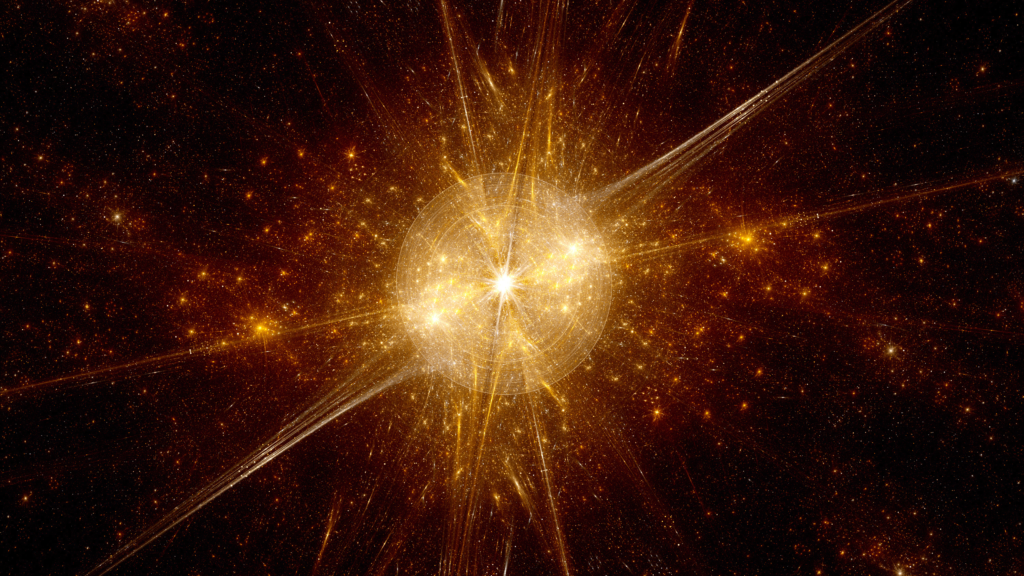The Colliding Antennae Galaxies
Spiral galaxies are beautiful structure of our universe. In this regard we are a little biased because we are ourselves live in a spiral galaxy (Milky Way).
Astronomers use catalogue names instead of giving a separate name to every galaxy. There are innumerable galaxies, and this is the 1300th object of this new general catalogue.
If you see this picture (it was taken by the Hubble space telescope) you can see a few hundred billion stars. In the middle is a ball type structure and in its outer parts there are new colored spiral arms. No thing that will happen to the spiral structure. If this galaxy NGC1300 collides with another big spiral galaxy. This is not a theoretical question. These sort of collisions take place in the universe.
The Antennae Colliding Galaxies
In 1781, a British astronomer, William Herschel discovered the planet Uranus. After four years in 1785, he saw a blob on the sky with the same telescope. He saw several other blobs but this particular blob quick call today “Antennae Galaxies”. These are actually two galaxies colliding with one another.
Now Herschel did not know that these are galaxies, and even hundred years have not passed since we came to know the concept of galaxies and learned these galaxies are like our Milky Way, and they look small and fuzzy because they are very far from us. Now relatively this is a new concept.
Now this blob which Herschel Saw are actually two galaxies which we named today as NGC 4038, and NGC4039.
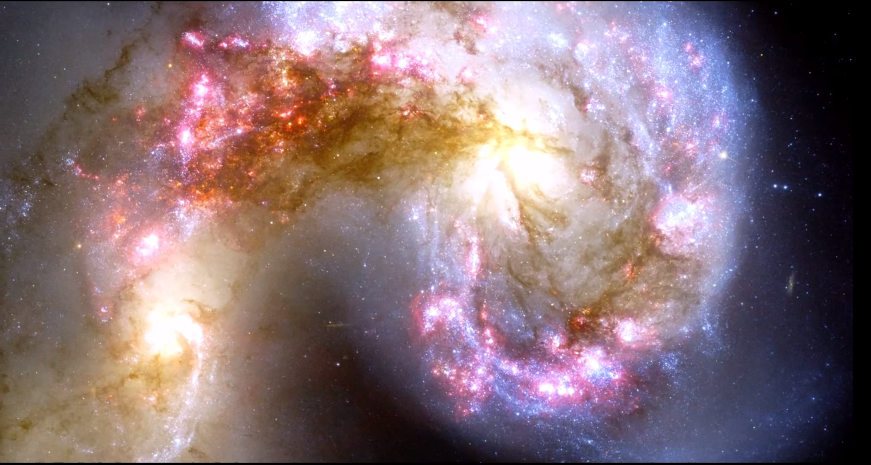
Now you are an expert. NGC is the name of a catalogue in which we have 4038 and 4039 but its nickname is ‘Antennae Galaxy’
This reason is when we take a picture of this galaxy from earth we see two Antennas like Antennas of insects.

Now we will talk about Antennas There are in reality tidal tales of stars, which were formed due to its Collison. This galaxy is approximately 45 million light years away from us, but these are the nearest galaxies colliding with each other. This has some importance for us because the future of our Milky Way is some what like this when Milky Way will collide with Andromeda galaxy in a few billion years.
If takes several hundred million years for this type of collisions so if it takes so much time how do we know that these Antennae galaxy visible to are a result of a collision?
One example can be, suppose you come to earth as an alien and you have a few minutes and you take a picture of some crowded place and you take back those pictures. How can you drive that humans on Earth are first small (infants) and then they grow up because the timeframe is 80 or 90 years of the lifetime.
So how do we know the growth of humans on Earth in a few minutes?
The matter will be if you see the picture (if taken at a crowded place) you will see some children, some middle age and some old people. From that you can derive although you are only taking a snapshot but that snapshot is telling you the different stages of age of humans.
Likewise, men astronomers see the galaxies they check that then they are taking picture of galaxies and stars, they are saying their different stages. And this collision or interaction of galaxies provides awesome pictures rather there are some catalogues in Astronomy comprising only of these interacting and strange galaxies. If you want to check, one catalogue is called ‘Atlas of peculiar galaxies’.
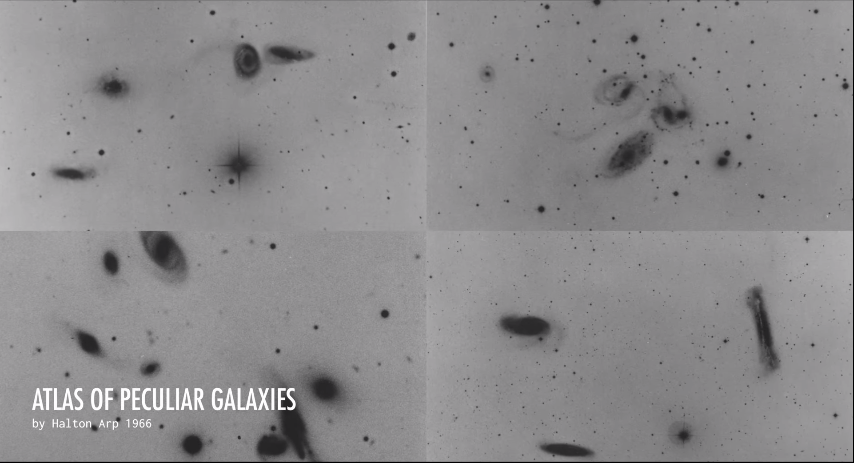
This was compiled by Halton Arp who searched only those galaxies, which are peculiar shaped.

It was a collection of interacting galaxies by the Hubble space telescope, all of which are not looking like spiral galaxies, but their shape are distorted.
No Snr, miles from this different shapes of galaxies, the drive at which stage in production is taking place, and what are the stages of interaction. After this astronomers use computer simulation to compress this longtime frame it into a few seconds or a minutes but the foundations are basic physics.
How Galaxies Collide
You are seeing a simulation of collision of two spiral galaxies. Simultaneously actual pictures have also been inserted so that when you are seeing the different stages in simulation, you are also seeing actual collision on the sky.
This way we know how to galaxies collide and how do the that gases and start spread out after these collisions.

This is another beautiful galaxy. This is a picture taken by Hubble space telescope of Mice Galaxies. These are two galaxies, and as you can see they are at an early stage of collisions but already their stars have spread out like a tail which astronomers call tidal tails.
This is a computer simulation specifically made of Mice Galaxies which tells us (Mice Galaxy is 290 billion light years away from us) how did they collide and how did they reach this shape.
Now we know this, that galaxies collide with one another.
What Happens to the Stars in this Collision.
And one question asked frequently by people is what happens to the stars in this collision.
So let me first clarify that stars rarely collide in this Galaxy collisions. This reason in the size of the stars is relatively small compared to the distance between the stars so when galaxies collide with one another basically the stars, do not collide with one another, whether they will pass through one another in space.
But gas cloud is present in these glasses definitely collide with each other and because of this collision of gas clouds countless new starts are formed.
Antennae Galaxy
Come, let’s see a close up of the Antennae Galaxy.

There is a beautiful picture of a galaxy named NGC 1300. This is an actual picture of the central area of the galaxy where the collision of these two galaxies is taking place. This collision started 300 to 400 million years before, and you can see some yellow and orange blobs in this picture. These are the old Stars of these galaxies. Alongside you see brownish type objects. This is dust which is also present in our galaxy and this dust is looking a bit disturbed when the galaxies colliding but what I want to draw your attention to is, you can see clusters of blob stars here.
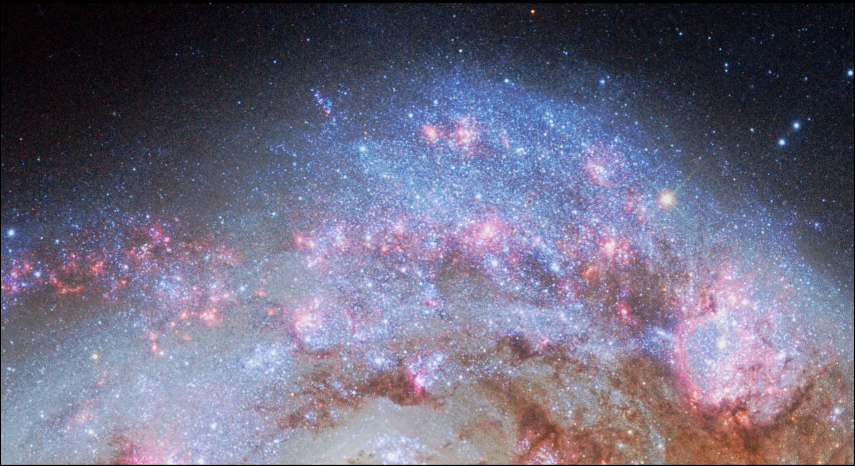
As I said, guess clouds collide in this type of collisions and new stars are formed because of this collision rather the idea is billions of new stars are formed due to this collision. Many stars are formed in clusters and these blue stars are blue because they are hot and big in size. This type of stars, compared to our sun have a relatively short life. They will explode in a supernova explosion in 8 to 10 million years from now. These are the biggest explosions of our universe.
5 Supernova in Antennae Galaxy
Astronomers have already discovered five supernova in this Antennae Galaxy during the last 10 or 20 years. Beside these blue stars you can see pinkish clouds, this is actually hydrogen gas,
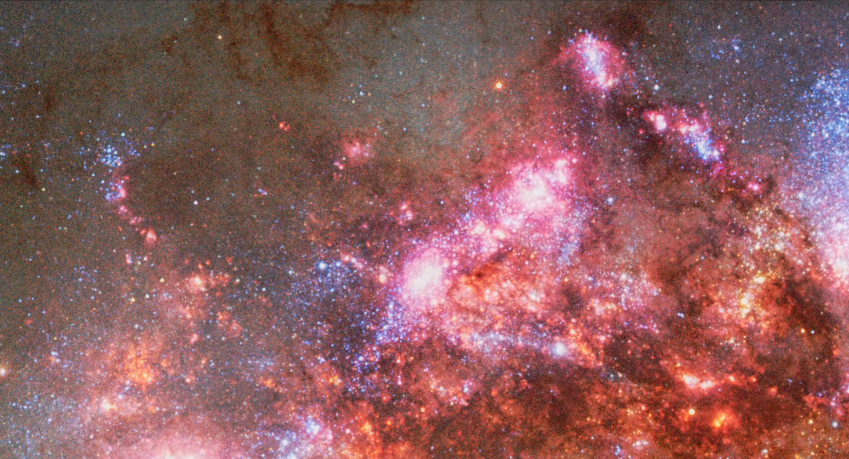
Gas clouds (about which I talked earlier on) which are glowing in pinkish or reddish color due to formation of new stars.
Now the conversation we had started mentioning the beauty of the spiral galaxies, was what will happen to the spiral arms in this collision.
As you can see in the ‘Antennae Galaxy’ the spiral arms are finished to a great extent and the stars have been pulled into the different tidal tales and the main mention due to which the order pattern of the spiral arms was present in finished now. By the way some stars will eject into intergalactic space after this collision.
Now the final form remaining after the collision of the Milky Way and Andromeda galaxy has been nicknamed “Milkdromeda” by astronomers and it is assumed that the spiral structure will not remain and it will be an elliptical galaxy.
What is the Future of our Sun?
We do not know, but the calculation at this stage, sure, it will not eject into intergalactic Space and the idea is it will be on the outer parts of this big elliptical Galaxy.
In a sense the ‘Antennae Galaxy’ is our future but I have a firm belief that innumerable planets must be present in Antenna Galaxy and strong chances are that life is present on a lot of these planets.
I can only imagine that maybe astronomers are looking about and seeing many beautiful stars farming regions in the sky because of this collision and I hope they are far from supernova explosion otherwise many lives may not survive these things.

